How to DropShip on Amazon
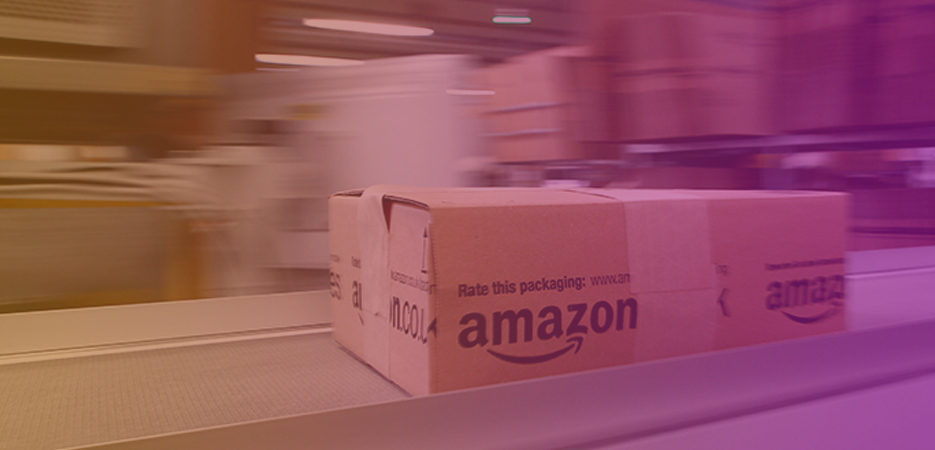
What is Amazon?
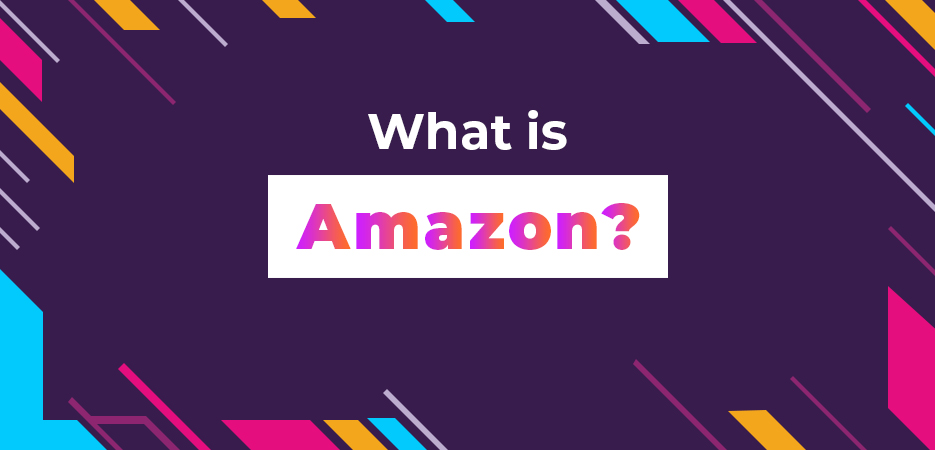
Initially launched in 1995, Amazon is the world’s biggest bookstore that evolved into a marketplace that sellers could list all kinds of goods for sale, both new and old. Since then, Amazon as a company has grown to include services such as logistics and payment services, Prime services such as music, video and eBooks, hardware, data storage and cloud services. There’s almost certainly a whole host of other things that we’ve missed off that list, but you get our point – Amazon as a company today is so much more than just a marketplace. But since you’re probably here because you’re considering DropShipping on the Amazon marketplaces, we’ll focus on that!
Amazon by numbers
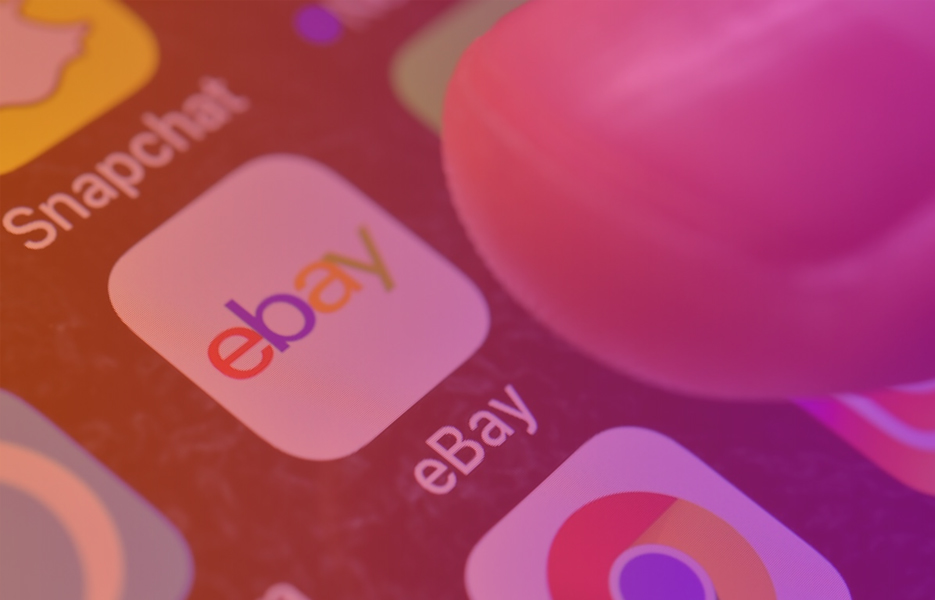
1994: the year when Jeff Bezos left his job to launch Amazon from his garage
89%: the number of customers that agree they are more likely to buy from Amazon than other eCommerce sites
103 million: Amazon Prime subscribers in the US in 2019
119,928,851: the number of products for sale on Amazon in April 2019
4000: the number of items sold on Amazon.com per minute
25,000: the number of sellers with more than $1 million in sales
86%: the number of British people using Amazon
Why DropShipping?
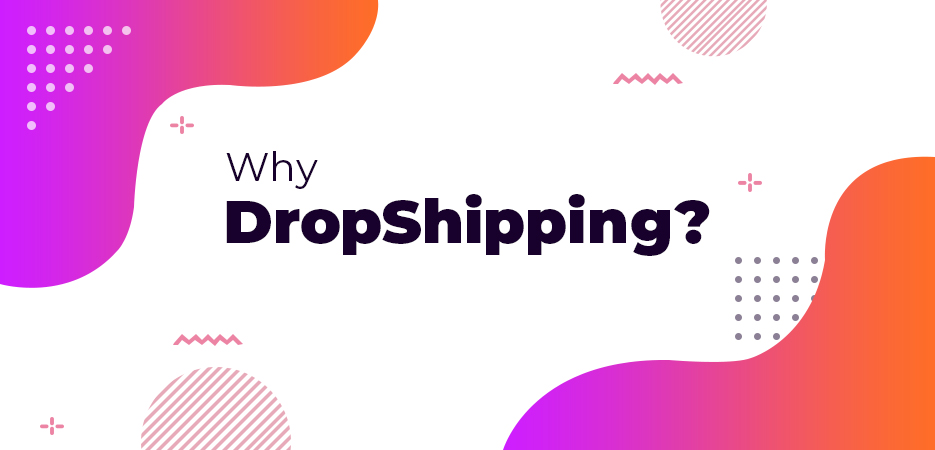
There are many reasons to start a business DropShipping. You might have decided that you’re fed up with your job, or maybe you want a career with more flexibility to do other things, like spending time with family, or indulging your hobbies. Your reason for getting started isn’t important; what is important is that you’re motivated to build your business, whether you’re building it in the cracks of time between your day job and your family, or you’re starting your DropShipping business and focusing on it full time from scratch straight away because you’re not currently working.
The fantastic thing about DropShipping is that it can be easy to start, it’s low risk and low cost. With the right approach, reliable suppliers and a great automation tool, you can manage it easily around your life, and build your business at the pace that suits you. We examine these reasons more fully in our ultimate guide to DropShipping (key reading if you’re thinking about starting DropShipping!) but the key point we’re making here is that DropShipping is a great, easy way to start a business.
DropShipping on Amazon
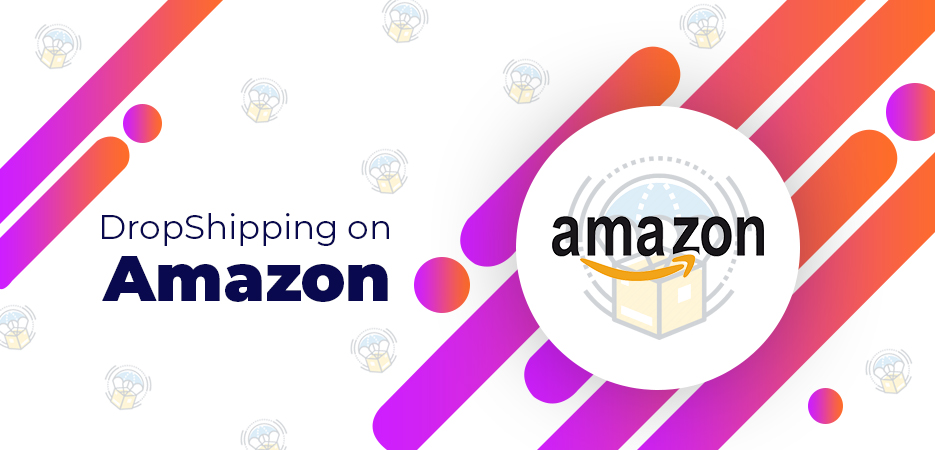
Let’s get to the main reason you’re here – to find out about DropShipping on Amazon! We’ll try and cover as many of the questions we get asked regularly about Amazon, but if you find that you’ve still got a burning question when you get to the end, get in touch! If you’re ready to get up and running straight away, you can sign up for our free plan to get started now.
Is DropShipping allowed on Amazon?
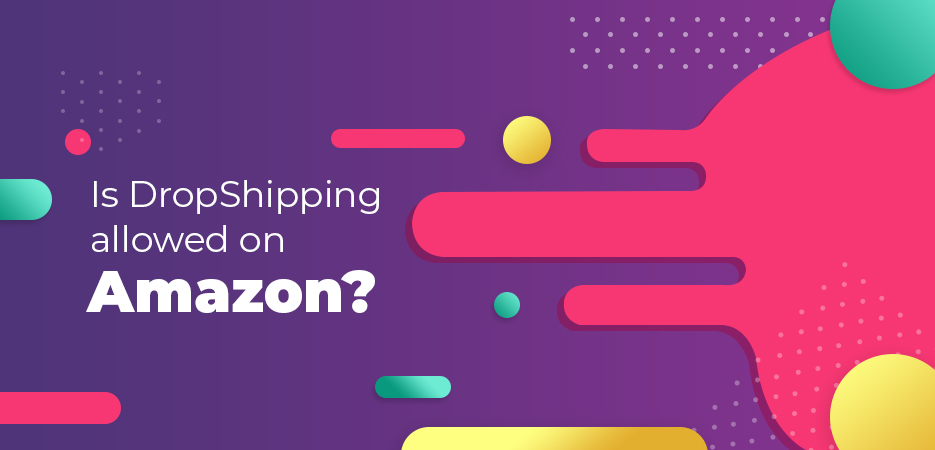
In short, yes, it is – as long as you have permission to sell the products.
The longer and more detailed answer, that you may have encountered is that there is a practice called retail arbitrage that is not allowed, and some people consider to be DropShipping. The difference between DropShipping and retail arbitrage is that with DropShipping, you already have permission from the supplier to sell the product. Sellers who are practicing retail arbitrage are selling items that are already for sale at a lower price – either on that marketplace or another (such as eBay, Groupon or a seller’s website) and when they sell an item, they contact the seller of that item and buy the product from them, and have the seller send the item to the customer directly. The problem with this approach is that sellers using arbitrage are essentially ‘stealing’ profits from the seller who does have permission to sell the item. This is even more restriction if you’re trying to do this with branded items.
There’s further rules that you need to be aware of as well.
- You need to ensure that your supplier doesn’t dispatch items with third party packaging, because that isn’t allowed.
- All your customer returns and complaints must be dealt with by you, not your supplier.
- This point should really go without saying, but we’ll say it anyway – you’ll need to comply with all Amazon’s seller agreements and policies.
If you break any of these rules, you’re going to put yourself at risk of having your account suspended – and like we mention in the restricted items section, that can be really hard to get undone. It might make for tedious reading, but familiarising yourself with Amazon’s terms and conditions can be the difference between your DropShipping business succeeding or not on there. Forewarned is forearmed!
Your step-by-step guide to selling on Amazon
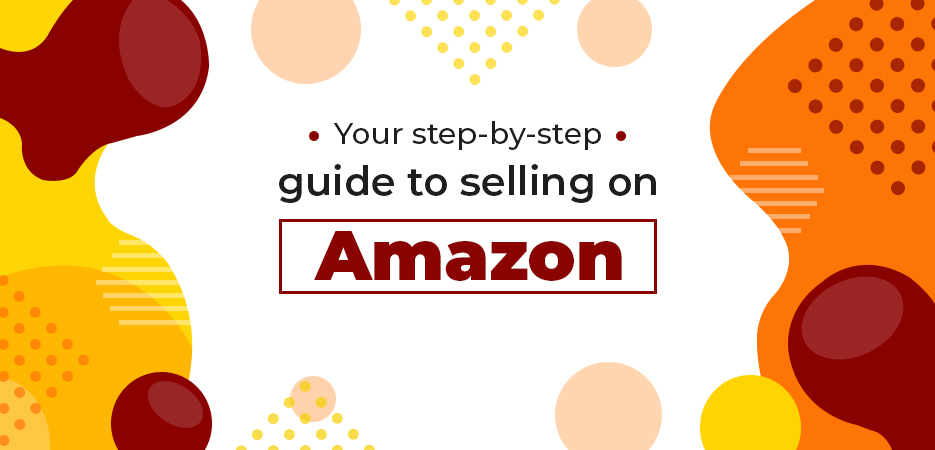
So you’ve decided DropShipping on Amazon is for you. Good stuff! Before you get started, always make sure you’ve drawn up with a strategy that makes sense. That means you’ve got an idea of your niche – what you’re going to sell, and who you’re going to sell to. These first two points are going to be critical for your success DropShipping on Amazon, so make sure you’ve done plenty of research.
Decide what to sell
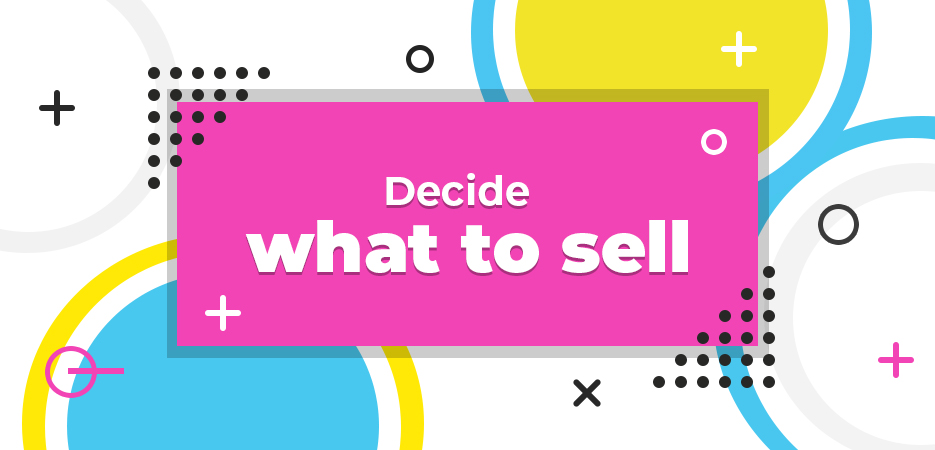
First things first – as always, you’ll have done your research to make sure there’s demand for what you’re thinking of selling. You might go down the route of selling what is trending, but that might mean you end up with really tiny profit margins, considering that you’ll have so much competition. Not only that, smaller profit margins mean that you’ll need to sell an awful lot of items to ensure you are making enough to pay yourself, or to reinvest and grow your business. (again, we talked about this in our ultimate guide to DropShipping post, which is a great read if you’re just starting out in eCommerce.) Once you’ve established that there’s enough of a gap in the market, you’ll need to make sure you’ve done your research about your target audience, and identify the products you’re looking for.
Find a great supplier – or more than one!
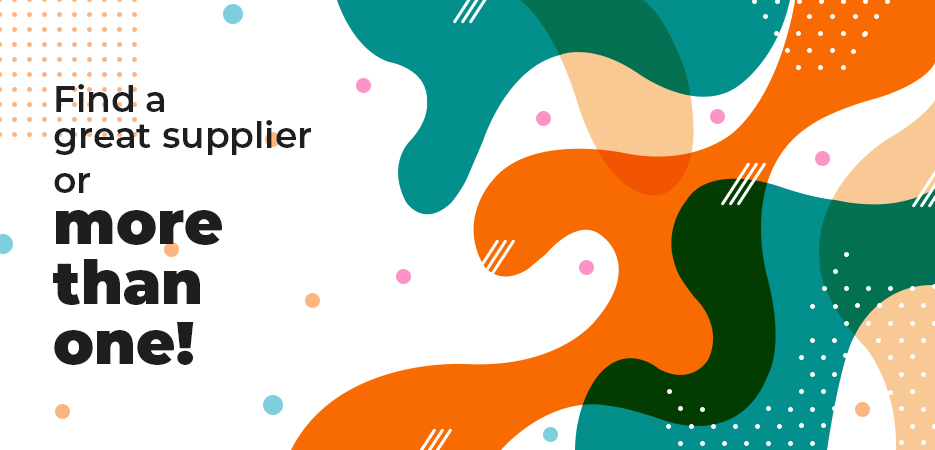
You could do this simply by searching and getting in touch with suppliers. There’s nothing wrong with doing that, but by searching manually, it will definitely take longer to find suppliers with the right products for you. If you’ve found more than one supplier, they might have different ways for you to download their inventory – which can mean potential for problems. However, if you’ve already signed up with a DropShipping platform like Avasam, this step is easy – and working with more than one supplier is easier too. Once you’ve found your suppliers and have been approved to sell their products, you’re almost there!
Create your Amazon seller account

This bit isn’t too difficult to do. You’ll need six things to complete your Amazon seller account registration:
1. Credit or debit card
2. Phone number
3. Company registration details
4. Primary contact information – you’ll need to prove your identity with a valid passport or national ID card, and you’ll also need proof of address
5. Beneficial owner information – that will be the owner of the business, if you’re working for another company. You’ll need to prove identity and proof of address
6. Bank account information
Once you’ve set up your Amazon account, you’ll need to choose your subscription.
Choose your plan

Unfortunately – and this is a snag for many first-time DropShippers – selling on Amazon isn’t free. There’s a choice of two plans: Basic and Professional.
The Basic plan is designed for sellers who expect to sell fewer than 35 items a month, and with this plan, you’ll only pay when you sell something. There’s a 75p fee per item sold, plus additional referral fees that may apply on each sale. The fees are different for each category, so you’ll need to check current rates to find out more.
The Professional plan is designed for sellers who are going to be selling a lot – by which Amazon means more than 35 items a month. If you’re being successful with your DropShipping, you’re likely to be aiming to sell a lot more than 35 items a month! You’ll need to pay a monthly subscription of £25, plus the additional referral fees we mentioned on the Basic plan.
To work out what your fees are likely to look like, you can use the Amazon Fee Calculator to do some forecasting.
Start listing!
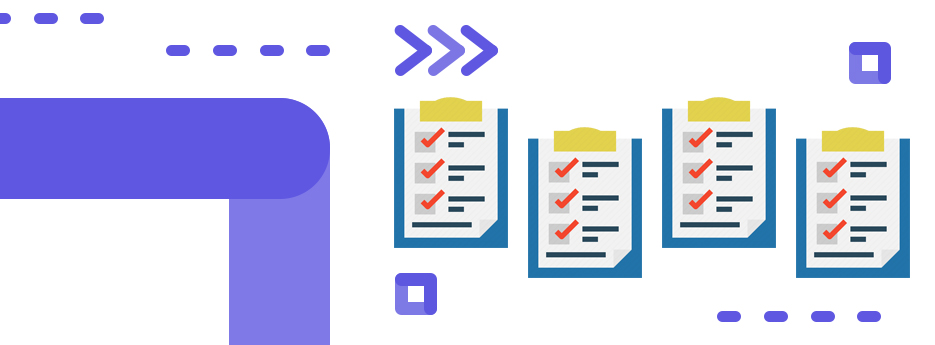
Once you’ve taken the plunge and signed up, you’ll need to start listing your products. Make sure you assign each item to the correct category – it might seem like this is stating the obvious, but we often see items in completely the wrong place when we’re searching Amazon! Making sure your spellings and grammar are good will go a long way when listing your items too. Firstly, there’s the issue of keywords – if your item is a clock, and you’ve mistyped and called it cloak, (or any other word that might be accidentally mis-typed!) people searching for clocks won’t get your item returned in their results. Secondly, poor spelling, punctuation and grammar look unprofessional on your listing, and so customers are likely to choose an item from another seller. There’s loads of tools that you can use to help you with this – the Avasam team love Grammarly.
Carry on selling

Once your items are listed on Amazon, it’s time to keep growing! That means marketing your products – such as starting and growing your social media presence and following – and refining what you sell. Make use of your reports regularly, so that you can identify what is selling well, and more importantly what isn’t. If an item isn’t selling well, start by checking your listing – is there a problem with the category you’ve added it to? Are there typos that need correcting? If your listing is fine, then take a look at what is the best selling item. Is it dramatically cheaper, better, or is there something else that might have caused it to outsell your listing? Once you’ve established what is causing your item to not be as successful as you’d like, you can fix it, or replace the item with another product that will sell better.
And of course, you don’t have to stick with selling the items that you start with! (although you never forget the thrill of your first sale!) Once you have your product list, you can carry on adding more. This is easy if you’re using Avasam – you can keep adding items from as many suppliers as you like and keep growing your business DropShipping on Amazon.
Advantages of DropShipping on Amazon

You might think the reasons to sell on Amazon are obvious, but we’ll cover them here because you might not have thought of some of them. We’ll start with the biggest reason:
The popularity of the platform

In the UK, you’d be hard pressed to find someone who hasn’t at least heard of Amazon. Worldwide, brand awareness may be lower, but to say Amazon is an eCommerce powerhouse would be to undersell the scope of the platform, and it is getting bigger all the time.
With such a large audience, selling on Amazon may allow you to expose your products to customers outside your target customers, and provide opportunities to grow your business. If you find you’re selling lots of certain items to specific areas, or to a new demographic that you hadn’t previously targeted, then you can exploit that opportunity.
Fulfilled by Amazon (FBA) options
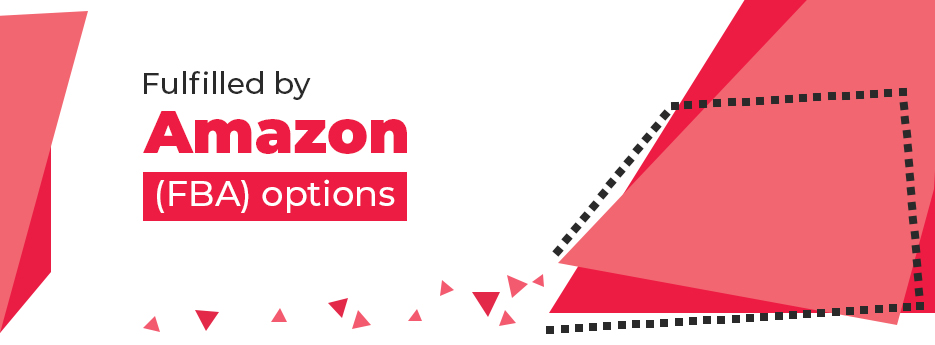
This applies to DropShipping wherever you’re selling. One of the advantages of DropShipping is that you’re not going to need to pay any warehousing costs. It might have been one of the reasons you decided to give DropShipping a go in the first place! However, if your supplier uses FBA (Fulfilled by Amazon) then Amazon will store and dispatch the item. Some customers prefer to buy where they see FBA because they believe that if there is a problem with their order, Amazon is more likely to deal with it more efficiently than a third-party seller. That isn’t necessarily the case (indeed, we know the majority of sellers and suppliers provide an excellent service – of course they do, their business depends on it!) but it’s something to be aware of.
Lower advertising costs

Like most platforms, Amazon offers you the opportunity of spending money on advertising on to increase your reach (how many people see your listing) – and that’s up to you whether you want to take advantage of that, and how much you’re willing to invest. If you have money spare to spend on advertising, then Amazon can be a good place to spend it. There’s no minimum spend, so you could try a small campaign of paid ads, and if you find it doesn’t work for your business, then you don’t have to bother again.
If you don’t have funds to invest (like when you’re just starting out) don’t worry. Simply by writing your product descriptions and titles well, and listing items for sale on marketplaces like Amazon, you’re also going to benefit from people finding your items organically. We mentioned it before, but it’s definitely worth taking the time to optimise your listings. Writing well worded, grammatically correct listings, using the right keywords and using great images is a great investment of your time, and will serve you well. As your business grows (and you have funds available) you can start to invest in advertising when it makes sense.
Challenges of DropShipping on Amazon
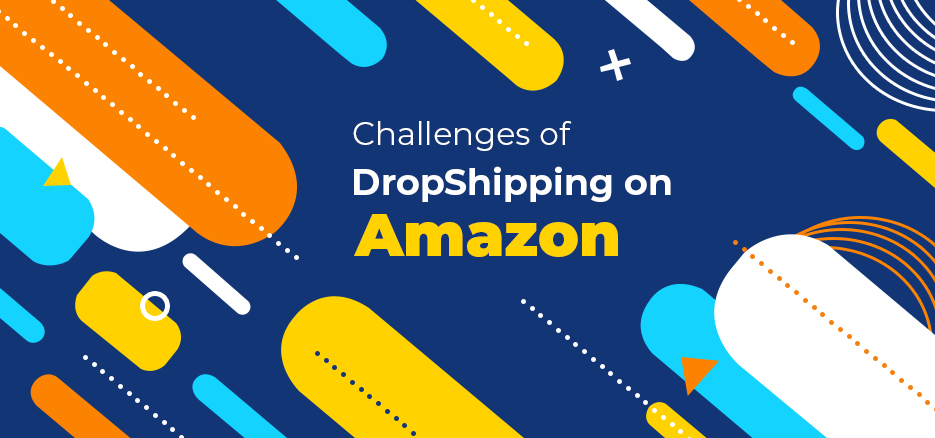
Although DropShipping on Amazon can be incredibly lucrative, there’s no guarantee that you’ll be successful, and stay successful. Here’s a quick look at some of the challenges many sellers encounter when starting to sell on Amazon.
Getting started

Since there are so many sellers trying to jump in and start selling, Amazon has become much stricter about who can sell what. That’s because there’s been too many sellers who have broken their rules, and because they want to ensure the best possible service for customers. You can be automatically approved to sell across a few categories when you open your seller account, but you’ll need to wait for approval for some categories, as we mentioned above.
Paying Amazon and getting paid
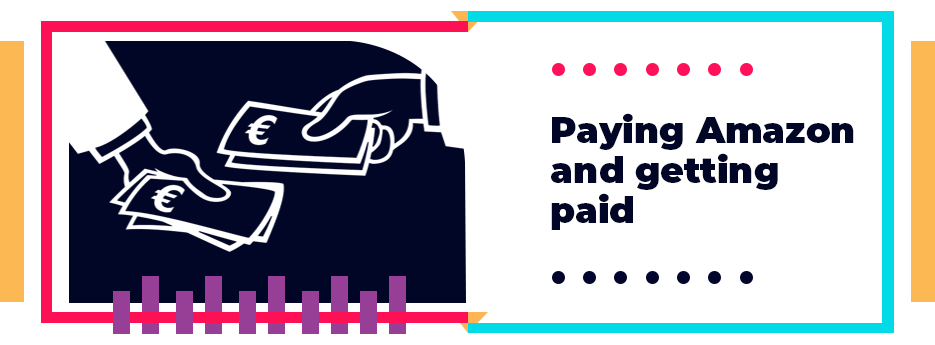
We talked about fees in the getting started section, but this is a major challenge to DropShipping on Amazon when you’re starting out. Amazon charges you a subscription to sell your products online, and you have to pay them upfront. No subscription, no sales – it’s as simple as that. This means that if you pay your subscription, you might end up out of pocket if you don’t make sales. Not only that, they’re going to charge you referral fees on each sale, reducing the amount of potential profit you might make.
Once you’ve sold an item on Amazon, you get paid, right? Nope, we’re afraid not! Amazon won’t release your payments immediately – they will hang onto your payments for up to 30 days (in some cases longer, if you read seller forums – especially if Amazon have decided to suspend your account!) which can cause you problems with cashflow if you’re not using a system like Avasam to automate your DropShipping.
Competition
Amazon has almost three million active sellers worldwide. That means your competition when selling on Amazon is incredibly fierce! On top of that, here’s a statistic that might be disheartening at first glance: less than 10% of active Amazon sellers made $100,000 in annual sales, and only 1% was able to make $1 million in yearly sales. That doesn’t mean that you can’t make money on Amazon – it just means that you need to use Amazon as part of your wider strategy. Remember, Amazon doesn’t just mean America and the UK! Depending on what you sell, and your target customer, other Amazon marketplaces may be more successful for you. We’ll get to talking about Amazon internationally in just a second.
Getting feedback can be hard
Customers are more likely to click Buy Now button when other customers have already left feedback. That means getting your first purchase is hard, and getting feedback can be even harder! Only an estimated one in 30 customers leave feedback on Amazon, so you end up needing to make a lot of sales to increase your positive feedback profile, and there’s not much you can do about this.
Product restrictions
If you’re selling branded items, you might end up encountering difficulties. Let’s say the brand decides they don’t want anyone else to sell their products. They can tell Amazon to restrict their products at any time, meaning that you might not be able to make any sales of those products – which could be a problemif they’re your best sellers.
Can I sell on Amazon worldwide?

Absolutely! Whichever Amazon website you start selling on, don’t restrict yourself to selling domestically. If your supplier can dispatch to the country you’re selling in, or you can engage with a supplier that is in that country, go for it! That’s easy for us to say – there’s quite a lot you’ll need to do before you simply jump in.
There’s a great checklist to help you understand if you’re ready to sell internationally on Amazon here.
Americas
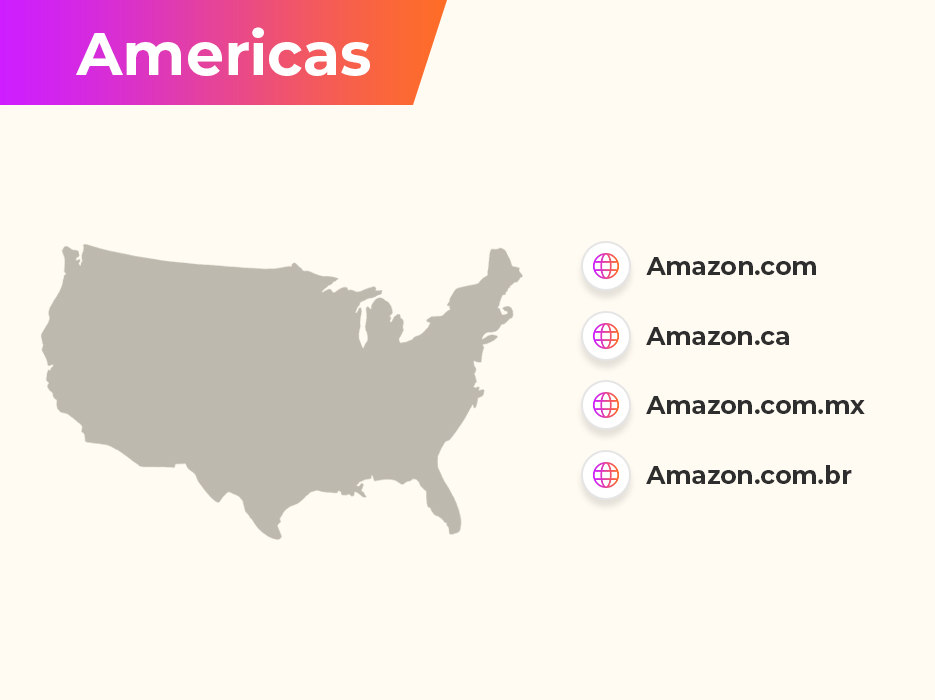
Europe

Asia/Pacific
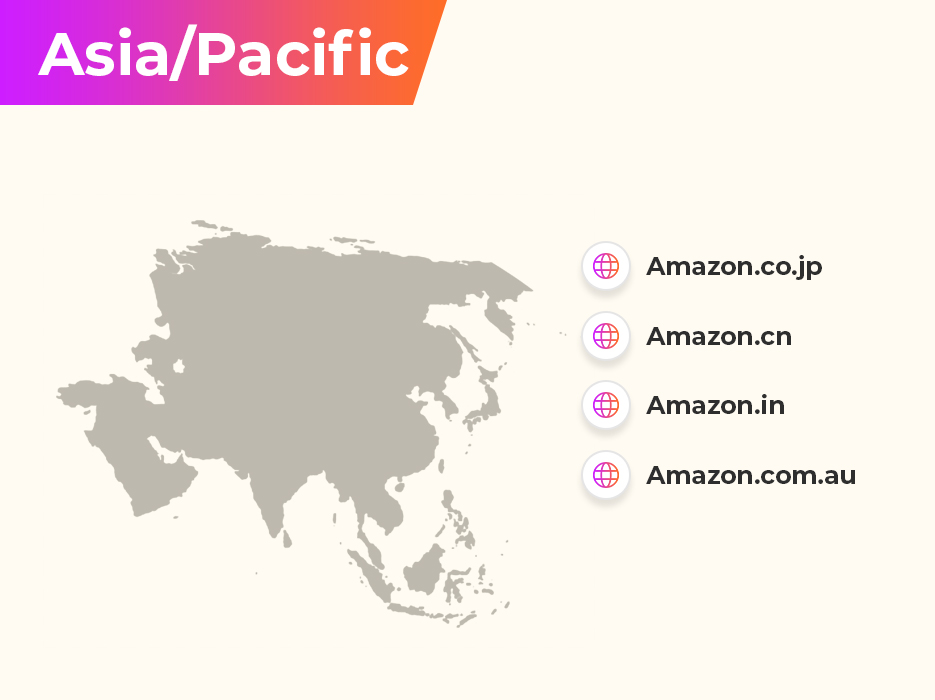
Middle East
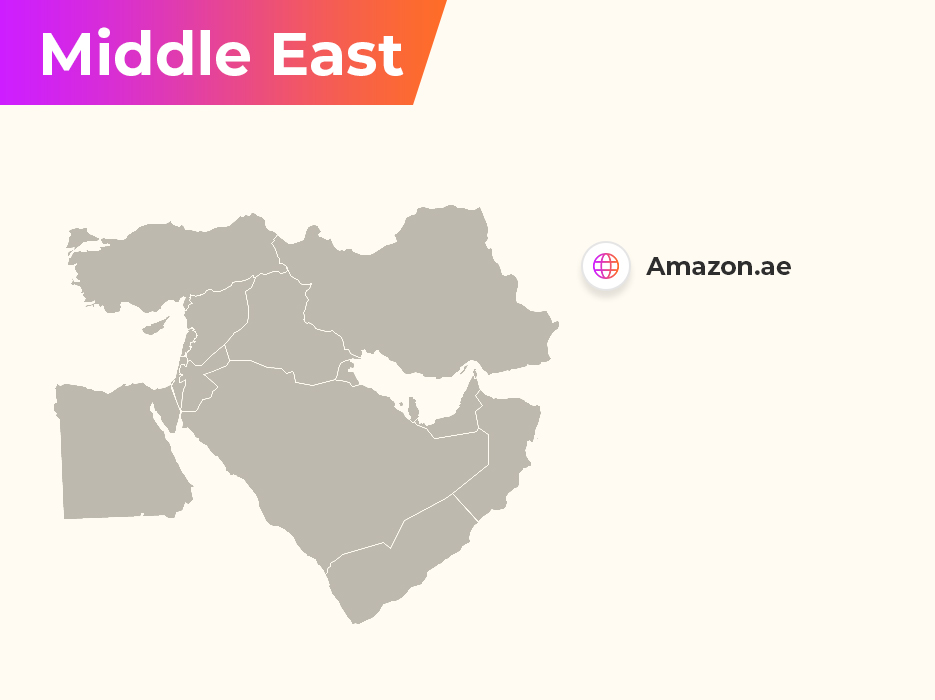
What can I sell on Amazon?
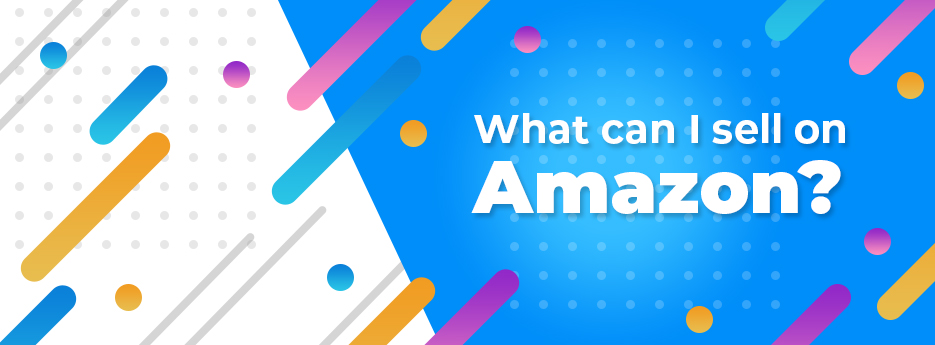
It might seem like you can sell just about everything on Amazon, but that’s not quite true. There is a huge range of items you can sell, but there’s plenty of items that are off-limits. You can use your common sense initially; anything that is illegal, or promotes illegal activities, stolen property and offensive materials are a no-no. You’ll also potentially encounter problems with anything that includes nudity, items that breaches an individual’s privacy, products from restricted countries and regions, and anything from denied parties.
There’s a huge amount of restrictions that might cause problems for you if you go ahead and try to sell them. We’ll get to explaining what the consequences might be in just a moment! Although there are 29 categories that you can list on (and of course, countless sub-categories), you can’t just go straight into selling on all 29 categories. There are 10 categories that you’ll need to apply for approval to sell on Amazon, including selling items such as alcohol, car parts and personal care products and appliances. There are some categories that require approval at certain times of the year – for example, the Toys and Games category needs approval from November to January. You can find out more here.
You’ll also need to act with care when it comes to recalled, hazardous or dangerous products. If you’re DropShipping, this is unlikely to be an issue for you, but if you have any doubts about the safety of a product, chemical contents or potential for causing bodily harm, tread carefully.
What happens if I sell restricted items on Amazon?
Simply put, if you break Amazon’s rules, selling on Amazon is going to get difficult. By which we mean, near impossible. We’re talking about cancellations of listings; suspension of listing privileges and ultimately, the chance that your account gets suspended permanently and you won’t be allowed to sell on Amazon anymore. If you want to find out more, you won’t have to look far to find evidence of how inconvenient it is when Amazon suspend your account. There’s absolutely thousands of posts and forums of sellers who have struggled to get their accounts reactivated after being suspended, even after consulting with lawyers specialising in getting Amazon accounts reactivated. These lawyers aren’t cheap either, so don’t say we didn’t warn you!
Is there anything else I need to know about restricted items?
This should go without saying really, but anything that breaks copyright, patent or trademark laws (and other intellectual property rights) is going to cause you problems. It’s also worth checking any cross-border issues on all your items – what is legal in the UK may not be elsewhere.
Is DropShipping on Amazon worth it?
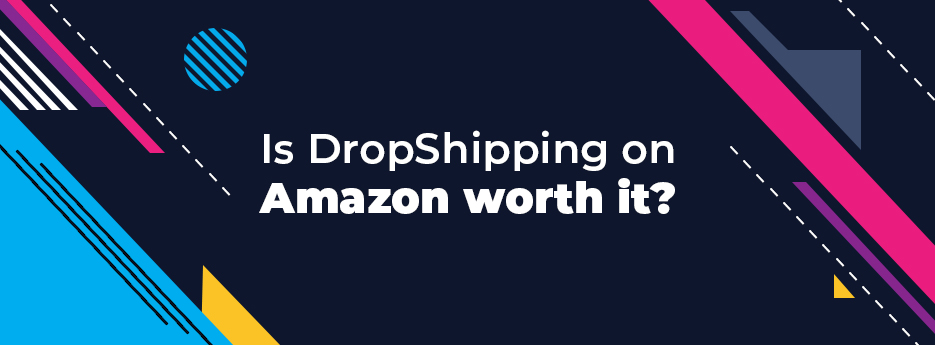
The short answer is that it depends. There are some people who make a lot of money by selling solely on Amazon. There are others who try to start selling on Amazon and give up in less than a day, because it’s simply not the right marketplace for their business.
With all the challenges that selling on Amazon presents, you might be thinking it’s not worth the hassle. In some cases, you might be right, especially if you’re selling items that are trending, or items with a lot of competition. You might be thinking you need to sell there anyway, because you don’t want to miss out on sales, even though we advise you not to take that approach.
We recommend not relying solely on Amazon for your DropShipping business. It can be a valuable addition to your marketplaces, but don’t think that Amazon cares about sellers – there are more businesses starting to sell on Amazon every day. That means that they don’t have to care, and there’s plenty of evidence – just check out the thousands of Amazon seller forums online!
What that means for you if you’re a new seller is, use it as a channel to make sales, but look to create more of a balance across several marketplaces. That way, if there’s a problem with one of your sales channels, you’re not losing all your customers.
What are the alternatives to DropShipping on Amazon?
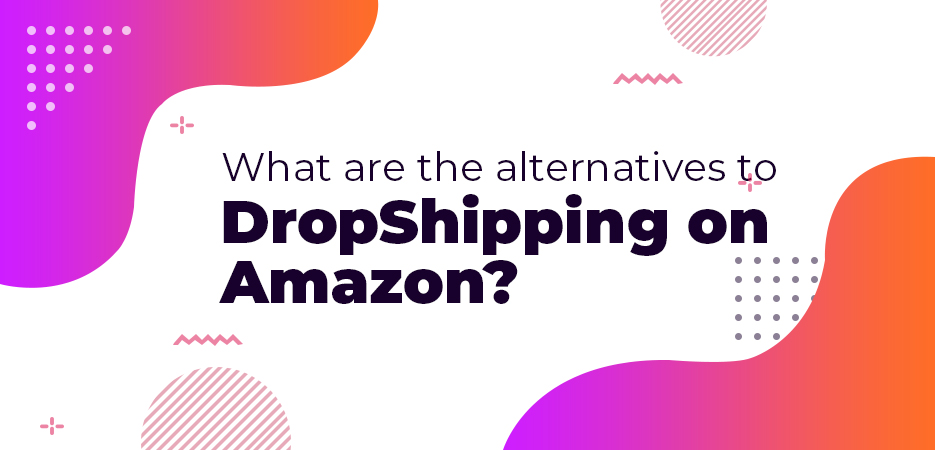
If DropShipping on Amazon isn’t the right move for your business right now, then you’ll be looking into alternatives. There are hundreds of options available that you can be listing products on, so here’s just a few to get you started.
Your own website
The most profitable way of making DropShipped sales is on your own website. That’s because selling on your own website means you won’t pay any fees on items you sell there. You’ll have other costs such as hosting fees and purchasing your domain name of course, but you won’t be spending on listings fees, referral fees or on commission.
If this isn’t something you’ve thought about yet, it’s definitely worth assessing whether it’s the right move for your business – particularly if you’re selling in a specific niche. We recommend taking a look at Magento, WooCommerce and Shopify to start with, but there are plenty of others to choose from. Whichever eCommerce website solution suits your business best, building your own brand and website is a really strong way to grow your profits in the long term.
eBay
When sellers are just starting out in eCommerce and DropShipping, Amazon and eBay are often at the top of their list. Selling on eBay can be lucrative, but just like Amazon, because eBay is so incredibly popular with customers, both Amazon and eBay are absolutely flooded with sellers. While both eBay and Amazon can be a great addition to your strategy, because there is so much competition, it’s a good idea to list your items on other marketplaces that aren’t so busy with sellers. We covered DropShipping on eBay pretty thoroughly on our blog post – when you’re done here, go check that out!
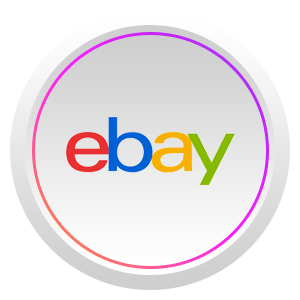
Wish
Wish is popular with customers who are looking for absolute bargains. Most products for sale on Wish are from China, and customers know they are likely to need to wait for their items, but they’re prepared to do so because items are much cheaper. However, there are customers who are ready to pay a bit extra for faster shipping, which even ePacket can’t provide. That’s where local sellers and suppliers can come in. You can sell most product categories on Wish, to most countries worldwide, making it a good option.

Groupon
Groupon’s focus is still great deals every day, but it’s also now a marketplace that customers head for when they’re on the hunt for bargains. DropShipping on Groupon might not return the highest profit margins, but used as part of a wider strategy can help lead customers to your website and encourage further purchases. Groupon have marketplaces in different countries around the world, so can help expand your sales internationally.

Wayfair
Sellers with a focus on homewares and furniture can make some of their best sales on Wayfair. Customers who are looking for items for their home head straight to Wayfair for high quality furniture at great prices. Wayfair as a marketplace continues to grow internationally, and there’s international shipping from Wayfair’s US, Canada, Germany and UK sites, so there’s potential sales to be made worldwide. Just be certain your profit margins are suitable, and that your supplier is happy to post items worldwide.

Trade Me
Trade Me is New Zealand’s biggest marketplace, and covers many of the same categories that eBay does. The benefit of selling to New Zealand is that there’s no language barriers, so you can start listing with no translations required. However, shipping is a concern, so ensure you factor those costs in and ensure your customers know where your supplier is shipping from, so that you don’t encounter complaints about long delivery times. It’s a good idea to keep your customers updated regularly too – if you’re using Avasam, notifications from shipping providers and suppliers get sent automatically.
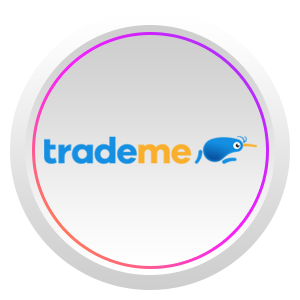
Fyndiq
Fyndiq is the Swedish ‘online bargain superstore’. If you’re selling low cost items, you can sell on Fyndiq! (with the exception of food!) Online sales are huge in Sweden – there’s over 7.3 million adults who spend around £8 billion online each year, meaning there’s massive potential for the right items. As always, keep an eye on your profit margins and make sure your supplier is happy to dispatch to Sweden before you start listing on Fyndiq.

Coolshop
For selling across northern Europe and Scandinavia, Coolshop is a successful online marketplace with specific websites for the UK, Germany, Sweden, Norway, Finland, Denmark and the Netherlands. Coolshop is recommended by many sellers as they provide great seller support, with the added bonus of having some of the lowest rates of commission you’ll pay, so it’s a good option when starting out DropShipping.
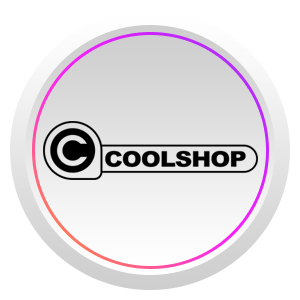
Spartoo
If you’re selling fashion clothing and accessories, a great way to maximise sales across Europe is to list your items on Spartoo – especially if your supplier has well-known brands. It’s a better option for well-established DropShippers, because there are strict criteria for selling on there. There’s also a monthly fee plus commission on your final sales price, so make sure you do the maths to make sure it’s the right move for you. If it works out to be a good move, there’s an offer to get your first three months free here.

Linio
Selling in Latin America might not be your first thought when you start DropShipping, but it’s the fastest growing region in the world for eCommerce. And since Linio has over 50 million visitors every month, and they don’t charge monthly subscriptions or membership fees, it’s a great option for new sellers. You’ll simply pay a commission on each sale. Think it’s a problem that you don’t speak Spanish or Portuguese? Think again. Linio is completely in English, and while you can add product descriptions in Spanish, you can still list in English. If you choose to because your research suggests it’s a good idea, the Linio team have translation services available.

Ozon
Sell to over a million daily visitors from Russia on Ozon. It’s an incredibly popular marketplace with Russians, who have adopted Ozon as ‘the Russian Amazon’ and downloaded the Ozon mobile app over 10 million times. There’s a range of categories to sell across, so it’s a great option for many sellers. You’ll need to look at shipping services (including cash on delivery options) and translation services.

Bol.com
Bol.com sells to the population of Belgium, the Netherlands and Luxembourg, which is over 27,500,000 people. Over 55% of those people shop on bol.com – and the marketplace outperforms Amazon in the region! There’s a commission on your sales, but no monthly fees, so it’s a low-risk opportunity. Your content needs to be in Dutch, but this isn’t necessarily a catch – if your supplier uses GTINs (barcodes, you can add that to your listing and the translation is done automatically for you.

Reverb
Music lovers everywhere love shopping on Reverb. Originally launched as a marketplace for guitars and guitar equipment, it now has categories for everything music related. We’re talking DJ equipment through to fine instruments and home audio, as well as music software. There’s no monthly subscriptions, you simply pay a fee when your items sell. Be careful not to oversell the quality of your products – musicians are very aware of quality, and over-promising on your listings might lead to negative reviews.
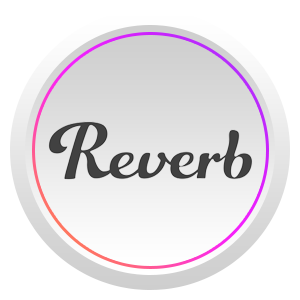
Tophatter
Tophatter is an auction website that allows sellers to make sales on fast-paced auctions that customers use to grab bargains. Because of the fast-paced nature of the website, customers have to act quickly so they don’t miss out – which is great for getting you loads of impulse buys. Although Tophatter might not be one of the most popular websites, there’s plenty of support – over 80% of reviews on Trustpilot rate it ‘Excellent’ or ‘Great’, which encourages new customers to click buy.

Privalia
If you’re selling mid-range and luxury brand fashion, selling on Privalia can be a great way to expand your sales worldwide. It’s a popular marketplace in Italy, Spain, Brazil and Mexico. You’ll need to meet the seller requirements, so Privalia might be more successful for established sellers, but there’s no membership or subscription fees. You’ll simply pay a commission on each sale.

Mercado Libre
If you’re listing your items on Linio, you might also want to consider selling on Mercado Libre, one of the biggest marketplaces in the region. Reach over 600 million potential customers across 18 countries with one account! There’s automatic translation to Spanish and Portuguese, and just commission to pay on each sale. You will need to talk to your supplier about shipping, but there are partnership options provided by the marketplace to help sellers and suppliers get the best deals.
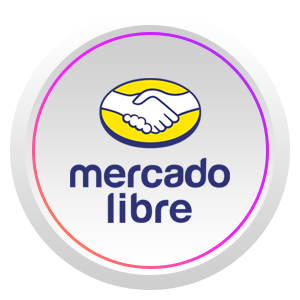
Flipkart
The biggest marketplace in India with more than 65% market share in many categories, Flipkart is the ideal platform for selling to customers in India. And since there are over a billion customers in the region, that’s a huge amount of potential sales! Before jumping in, you’ll need to check import laws, shipping requirements and taxes, as well as translations, but if you do your research well then there’s massive potential for you to extend your sales.

Elala
Another marketplace catering for Indian customers, Elala has a broad range of categories. Selling on Elala gives you the advantage that you get a store page for your products, and so customers see your branding. Once they receive great service from you, you’re likely to receive great feedback and there’s the chance that you can start building brand recognition, and brand loyalty.

Tanga
Want to DropShip items to customers in the USA? Of course you do! Tanga offers great deals to US customers across a range of categories. You’ll need to make sure your prices are suitable, while maintaining your margins, and of course consult with your supplier to make sure they can ship to the States. Customers shopping on Tanga expect their items to come from international sellers, so they’re tolerant when waiting for delivery, but it’s a good idea to make sure your tracking information is updated regularly. (if you’re using Avasam, that’s taken care of automatically!)
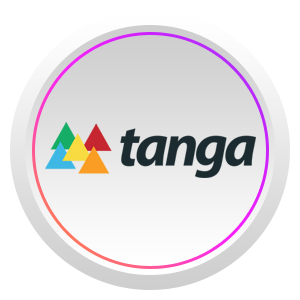
Shopclues
Shopclues is another Indian marketplace with a broad range of categories. As we mentioned, there’s well over a billion customers buying online in India, so there’s plenty of opportunities to make sales there. Shopclues sellers simply pay a commission when they sell, with no monthly subscription or listing fees. You’ll need to check your supplier can arrange deliveries to customers in India in good time, but otherwise selling on Shopclues is relatively risk-free.

Yatego
Yatego is the German-speaking marketplace with a huge range of categories that sells to over 3.4 million customers across Europe every month. Let’s take care of the initial barrier: if you don’t speak German, you’re going to need to use translation services for your listings, and potentially for your customer service too, so you’ll need to decide whether you can do this efficiently. (simply translating in Google isn’t ideal, and we don’t recommend it for this purpose) There’s also a monthly fee to pay, so you’ll need to take this, as well as shipping, into account when deciding if Yatego is for you.

Can I DropShip on Amazon with Avasam?
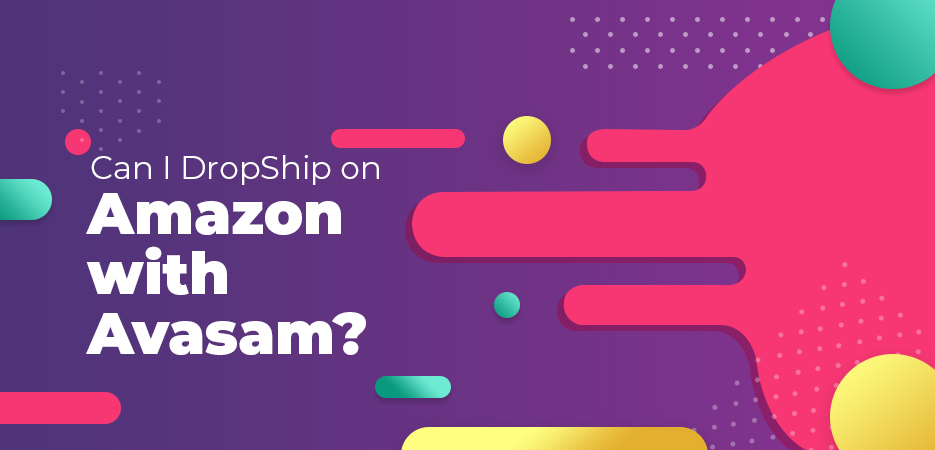
The short answer to your question: Yes, absolutely! Remember when we said you’d want some great automation for your DropShipping store? Back when we first started designing Avasam, we did so with one goal in mind: making DropShipping easy for both sellers and suppliers. Today, Avasam does everything you need for DropShipping on Amazon:
- Easy to use interface
- Finding suppliers
- Working with multiple suppliers
- Supplier verification process to help sellers identify the best suppliers
- Hundreds of thousands of products
- Over 40marketplaces and eCommerce website provider integrations
- Shipping integrations
- Secure payments (via our partner Adyen)
- Automated reporting
So far, we’ve yet to find a solution that offers such flexibility with their platform as Avasam does. Many other DropShipping platforms focus sellers on only selling through one platform, or just a few. Avasam is the opposite: we offer multichannel DropShipping, so you can make the most of selling everywhere.
Like everything else when it comes to DropShipping, we always recommend doing your research to get things right. You might not crack it entirely first time, but by being informed, you’re more likely to be successful from the outset. You need to be selling where your customers are, so that’s why it’s worth doing your research. We covered this in more depth in our ultimate guide to DropShipping, so if you’re considering starting to DropShip items on Amazon, make sure you have a read of that.
Although there is a good chance that assuming Amazon is a good addition to your DropShipping marketplaces because it is so popular, it’s not always the case. On marketplaces like Amazon where you have to pay subscriptions, or a fee per listing, it’s a good idea to check that it really is going to be worth your while. If you decide it isn’t worth your time due to competition, or because the fees make selling on Amazon not worth it, then that’s fine. If your research is good, then you’ll be selling where your customers are buying anyway.
Whether you decide to start DropShipping on Amazon or not right now, don’t forget your business is dynamic, and you should be assessing how well your current marketplaces are performing (or not) regularly. You might find that you stop and start selling on different platforms at different times of the year, for example – particularly if you sell products that are affected by the seasons, or items for certain celebrations or festivals.
If you’re selling well on one Amazon marketplace, you can also succeed by listing on other Amazon marketplaces worldwide. And if you’re successful on Amazon, don’t stop there! Adding more marketplaces, and making more DropShipping sales has never been easier – but that’s especially the case when you’re using Avasam.
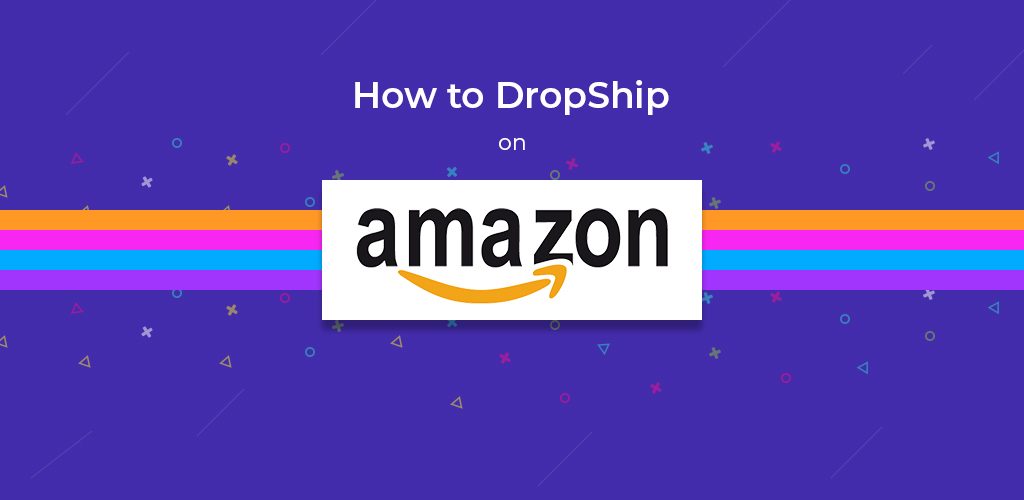

DropShip products from verified suppliers to diversify your inventory and scale your eCommerce business